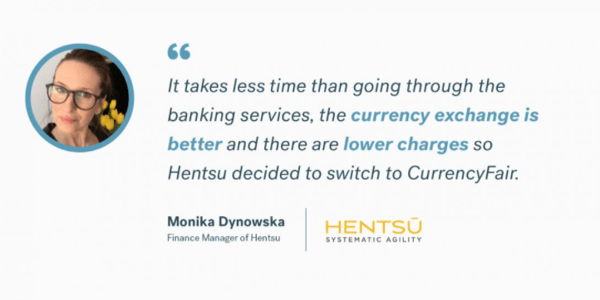Ensuring the profitability of projects by charging at an appropriate level is a key challenge for any web development company. If you can sell yourself and show the value of your web development services, you can attract clients that are willing to pay more.
Your true value is in providing a solution to the client's problem, not simply a website. Not selling yourself short is important. That said, part of understanding your offering is knowing your limitations and being able to turn away a job.
In a highly competitive market not understanding your value proposition or lacking the confidence to charge more could see you struggle to keep the lights on. In this article we offer practical advice to help you avoid that, at all costs.
Know your offering and differentiate yourself
The first stage of putting a value on your web design services is knowing what kind of work you are consistently capable of delivering. Websites range in complexity from personal sites to small company offerings to corporate sites, e-commerce stores and beyond. To know what to charge, know your most marketable skills, your ideal audience, and how best to differentiate your offering to them.
Trying to be all things to all people could see you spread yourself too wide. Think instead about developing a more niche offering. There should still be scope to keep the work interesting and diverse. The benefits of having two or three go-to product “buckets” are many. They include developing specific industry knowledge, having a repeatable process, and building a portfolio of certain types of work that give you a strong claim to win more.
Perhaps the biggest benefit of developing a more niche offering, is that you will have a good idea of the cost, time, and resources it will take, and what to charge to ensure profitability.
Understand exactly what the client wants
It is in both party's interest to create a web experience that converts for the buyer and is profitable for the seller. First you should understand how the website will convert. The goal could be buyers, leads, subscribers, downloads, free demos, memberships, ad revenue, in fact whatever the client wants. By knowing how much a new website will boost conversions, you can estimate the value of how much each new conversion is worth to them, and charge accordingly.
If the client is satisfied that they are paying for the outcome, your rate can reflect the true value to the client, and you may be able to charge more. Then instead of tracking every hour spent on a project, you can focus on ultimate value and negotiate a better rate. Don't forget to research your competitors' rates to get a better idea of the price range. To be able to get an accurate measure of your profit, you must know your costs.
Know what it costs
Every business has bills to pay. So, it is essential to account for all expenses in order to determine the cost of your services. These should include anything you consider essential in completing the work and bringing your services to the client. Preparing a website cost plan and then a contract that has all business, technical and personal costs built in can protect the value of your offering.
Scrutinise your margins
Increasing the value of your web development services means managing projects well and controlling overall costs. It's important to continually scrutinise your margins and see how they can be improved. As well as understanding your margins, revenue and overall profitability, labour costs are a major factor.
Whether you use permanent staff or contractors, or both, offering a competitive salary will get you the best people. To incentivise them and minimise cost, benchmark your salaries against competitors and hold regular reviews.
Strive to become more efficient
Part of making a profit and being able and scale a business is utilising more efficient ways to operate. There are a host of business automation tools to consider, such as project and workflow management, marketing, social media, CRM, communication, reporting, finance and many more. Whatever solution you need, the objective is to get rid of repetitive admin-based tasks that free up time you can spend more productively elsewhere.
There is also the role of freelancers and outsourced workers who you can offload menial tasks to, chunks of work, or anything you can't do. Establishing a repeatable process, allows you to delegate work to others and concentrate on winning business. The more projects you do, the more data you can collect. Use it to analyse trends and find new tools or processes that can help you remain competitive.
Get paid and pay out
Keeping a tight rein on your overall finances and margins is essential but so is getting paid and paying your staff and other overheads. Waiting for a job to finish before you get paid is risky, especially if the client drags their feet when it comes to payment, or even refuses. Your cash flow, financial health, and ability to take on work, will benefit if you can negotiate stage payments. Try to set realistic and sensible milestones that everyone agrees on.
Now that it's time to invoice the client, don't let your concentration wane. Invoicing issues such as delays, missing information, or non-itemised services are common and should be avoided. Perhaps the biggest is allowing invoices to go stale. It can be awkward, but try to keep on top of clients who do not pay on time, consider hiring someone to keep money coming in. To make sure clients have no reason to delay, be sure to bill them in their local currency.
Save money on FX and international payments
At CurrencyFair, we help businesses of all sizes save money, save time, and stay in control with bank-beating FX rates and smart features that streamline payment processes.
Our user-friendly platform allows you to pay workers, suppliers, and contractors from abroad in up to 22 currencies, with many of our transfers completed within 24 hours.
With local bank accounts across the globe, your international payments on our platform are treated as domestic transfers, saving you time and money. Our multi-currency account allows you to securely exchange currencies and transfer to bank accounts in over 150 countries.







.jpg?width=600&name=nordwood-themes-8LfE0Lywyak-unsplash.jpg(1).jpg)





